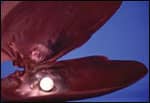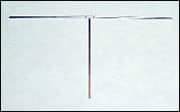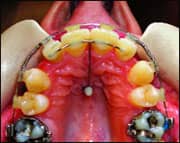by Sebastian Baumgaertel, DMD, MSD, FRCD(C)
Maxillary A-P Mechanics Using Palatal TADs and the tomas® T-Wire
 |
The human palate provides favorable hard- and soft-tissue dimensions for the placement of temporary anchorage devices (TADs). This site is especially suitable for anterior-posterior tooth movement in terms of molar protraction or distalization because interference of the TAD with tooth movement is never a problem. A very efficient way to move teeth with a palatal TAD is the use of indirect mechanics—this basically means “locking in” a group of teeth that will remain stable and using the implanto-dental unit as anchorage to move another group of teeth.
 |
| Figure 1: A tomas® T-Wire. |
 |
| Figure 2: Molar protraction using a palatal tomas Pin, a tomas T-Wire, and an elastomeric chain. |
 |
| Figure 3: Distalization using a palatal tomas Pin, a tomas T-Wire, and an open coil spring. |
A new auxiliary allows this in a very simple manner. The tomas® T-Wire consists of two 0.020 x 0.020 stainless steel wire segments that are laser welded together at a 90° angle (Figure 1). In my design, the crossbar is adapted to the lingual contour of the maxillary incisors. The longitudinal wire section is then engaged in the TAD and secured in place. The use of a bracket head TAD is necessary for this, as shown with the tomas Pin. The crossbar is then bonded to the lingual of the maxillary incisors, as you would with a lingual retainer. This provides absolute anchorage to the maxillary incisors. Now, the posterior segments can be protracted against this anterior anchorage segment (Figure 2) or distalized (Figure 3) using elastic modules like the ones that are included in the tomas Auxiliary Kit. If retraction of the incisors is desired after the distalization of the posterior segments, the T-wire can be removed and be replaced by a transpalatal wire segment passing through the TAD. This is bonded to the lingual surface of the canines or first premolars and stabilizes the posterior segments, which now act as anchor units. In case of a deep bite, I recommend the use of bite elevators on the molars to create adequate clearance. This also enhances tooth movement since the anchorage effect of an interdigitated occlusion is reduced.
|
Do you have a pearl to share with your colleagues? Please send it to /strong>, along with your headshot and any other pictures you would like to include. |







